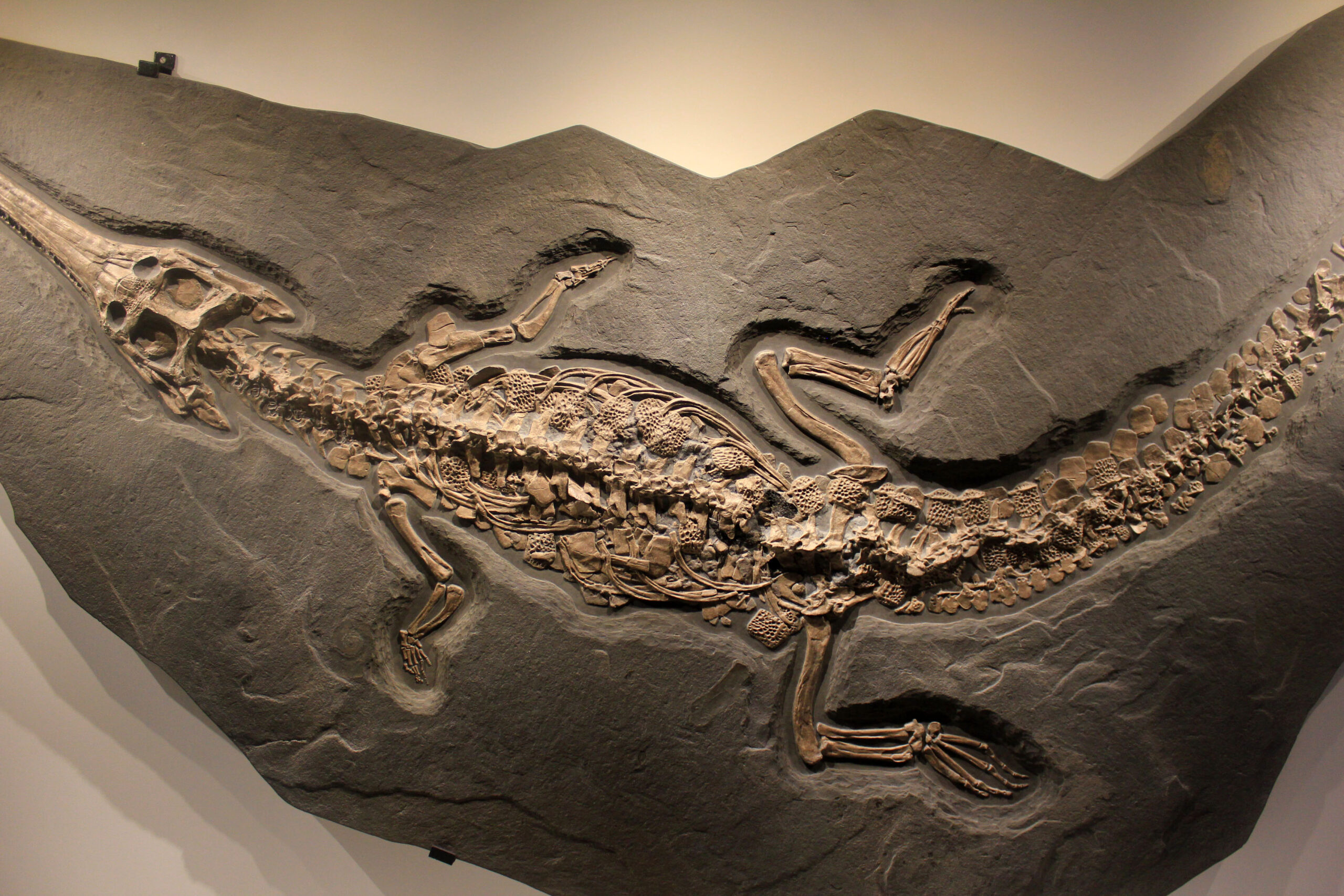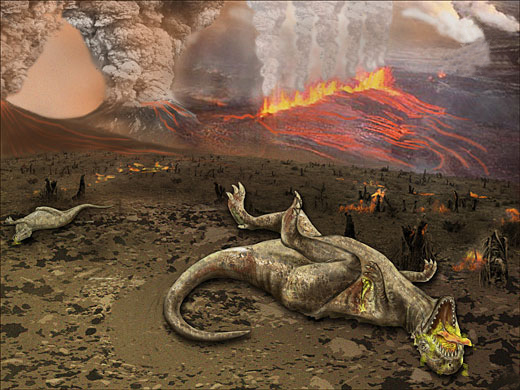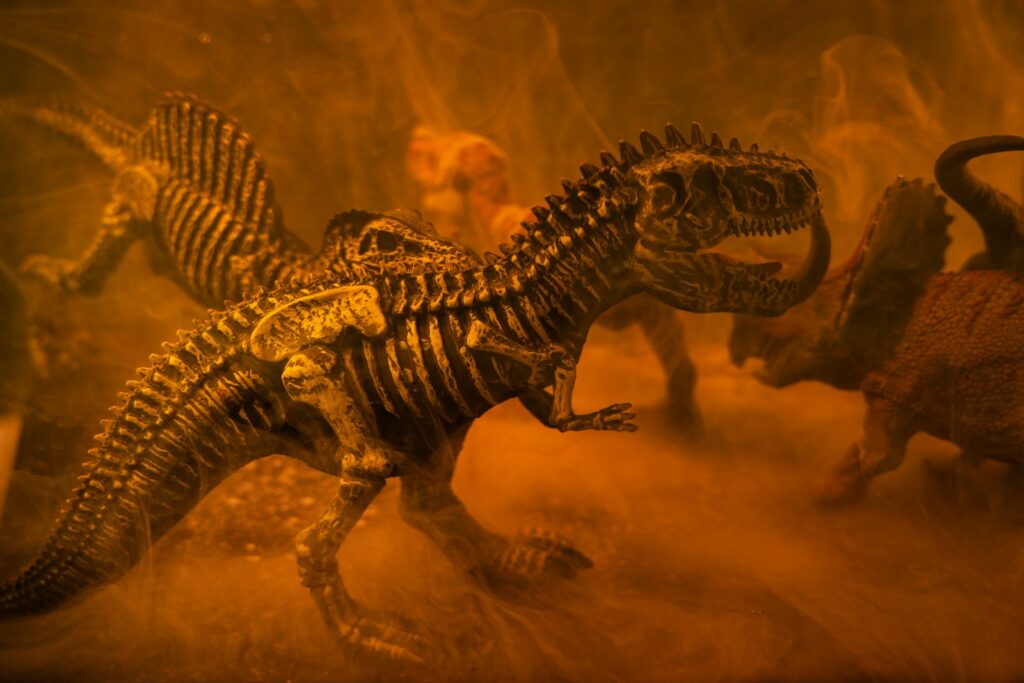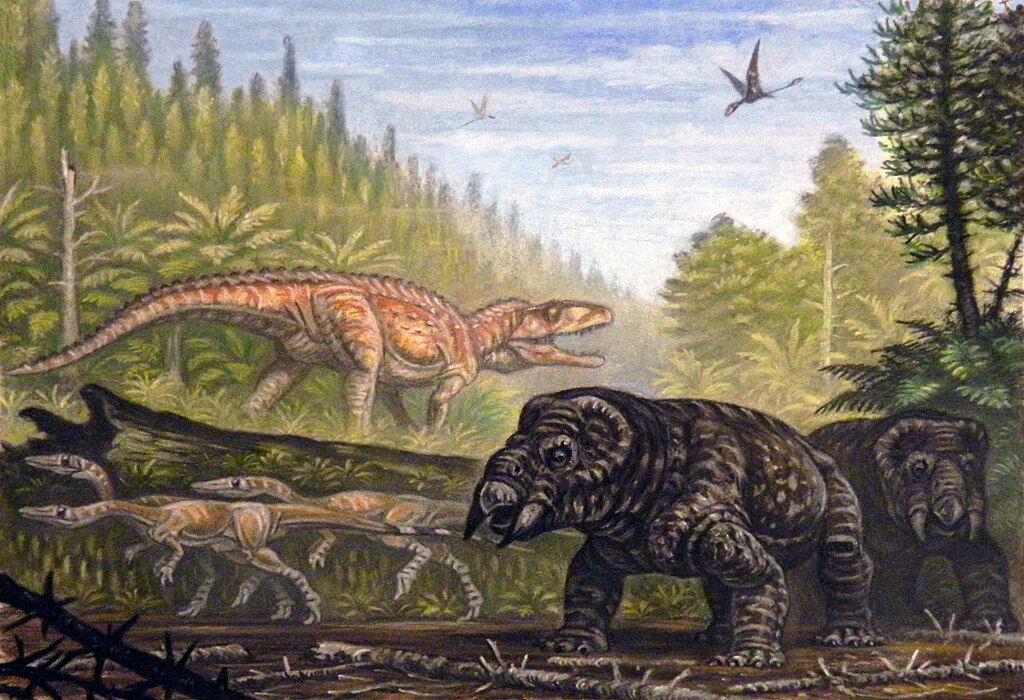Imagine a world where the asteroid never hit. Picture massive sauropods grazing beneath alien skies, their descendants having conquered not just Earth, but the cosmos itself. It’s a thought that sends shivers down your spine and ignites the imagination like few others can. For 165 million years, dinosaurs ruled our planet with an iron claw, evolving into creatures so diverse and sophisticated that they put most modern animals to shame. But then, 66 million years ago, everything changed in a flash of cosmic violence. Yet what if that catastrophic moment never happened? What if these ancient titans had continued their evolutionary journey, developing intelligence, technology, and eventually reaching for the stars?
The Intelligence Revolution That Never Was
The path to space exploration begins with intelligence, and here’s where things get fascinating. Troodontids, those bird-like dinosaurs with oversized brains, were already showing promising signs of cognitive development when the asteroid struck. These creatures possessed brain-to-body ratios that rivaled early mammals, suggesting they were capable of complex problem-solving and social behaviors.
Dr. Dale Russell’s famous thought experiment proposed that Troodontids might have evolved into “dinosauroids” – upright, large-brained beings capable of abstract thinking. While speculative, the concept isn’t entirely far-fetched. Consider how rapidly human intelligence evolved once our ancestors committed to bipedalism and tool use.
Modern birds, dinosaurs’ direct descendants, demonstrate remarkable intelligence. Ravens solve multi-step puzzles, and parrots engage in complex communication. Given millions more years of evolution, it’s entirely plausible that dinosaur intelligence could have reached human levels or beyond.
Tools, Fire, and the Foundation of Technology

Intelligence without opposable thumbs seems limiting, but dinosaurs might have found creative solutions. Many species already possessed grasping hands with sharp claws – perfect for manipulating objects and crafting tools. Velociraptors and their kin showed sophisticated pack hunting strategies, indicating they could coordinate complex group activities.
The discovery of fire would have been crucial, just as it was for human ancestors. Some dinosaur species might have learned to control naturally occurring fires, eventually mastering fire-making themselves. Imagine massive Allosaurus-descended beings gathering around prehistoric campfires, sharing knowledge and planning hunts.
Tool use could have evolved from simple stick-wielding to sophisticated implements. The transition from hunting tools to farming equipment, then to mechanical devices, follows a logical progression that any intelligent species might pursue. Dinosaur “hands” might have proven even more versatile than human ones.
The Great Dying That Opened New Doors
Without the Cretaceous-Paleogene extinction event, Earth’s evolutionary trajectory would have been radically different. Mammals, our ancestors, remained small and largely nocturnal while dinosaurs dominated. But in our alternate timeline, these mammalian competitors might never have inherited the Earth, allowing dinosaurs to continue their reign indefinitely.
This extended dominance could have led to unprecedented evolutionary experimentation. Different dinosaur lineages might have developed specialized roles – some becoming the equivalent of farmers, others engineers, and still others explorers. The diversity we see in modern human societies could have emerged among dinosaur species millions of years earlier.
The absence of mass extinction also means more time for trial and error. Species could have refined their adaptations over vast timescales, potentially leading to biological solutions we can barely imagine today.
Dinosaur Civilization and Social Structures
Evidence suggests many dinosaurs lived in complex social groups, with some species showing signs of cooperative behavior that goes beyond simple pack hunting. Maiasaura, the “good mother lizard,” demonstrates that dinosaurs were capable of sophisticated parental care and possibly even early forms of education.
Picture vast dinosaur cities rising from ancient landscapes – not built of stone and steel, but perhaps grown from living materials or carved from massive trees. These beings might have developed biotechnology instead of mechanical technology, using selective breeding and genetic manipulation to create living tools and structures.
Their social hierarchies could have been based on different principles than human societies. Perhaps size, age, or specialized skills determined leadership roles. Communication might have involved complex body language, sounds beyond human hearing, or even electromagnetic signals.
The Physics of Dinosaur Space Travel
Here’s where reality gets tricky. The square-cube law presents a significant challenge – as organisms get larger, their volume increases faster than their surface area, making it harder to regulate temperature and support body weight. Dinosaurs venturing into space would need to overcome these physical limitations.
However, dinosaur space travelers might not have been the massive creatures we imagine. Evolution tends to favor smaller, more efficient forms for complex tasks. Space-faring dinosaurs could have been human-sized or smaller, having evolved from larger ancestors but adapted for the demands of technology and space travel.
Their unique physiology might have offered advantages in space. Many dinosaurs had hollow bones, similar to birds, which could have made them naturally lighter and better suited for low-gravity environments. Their respiratory systems, already highly efficient, might have adapted well to recycled spacecraft atmospheres.
Biological Advantages in the Cosmic Void
Dinosaurs possessed several traits that could have made them exceptional space explorers. Their four-chambered hearts, similar to those in birds and mammals, provided efficient circulation – crucial for handling the stress of space travel. Many species also had advanced visual systems, potentially including the ability to see ultraviolet light.
Cold-blooded species might have had advantages in the temperature extremes of space, requiring less energy for thermoregulation. Their ability to enter dormant states could have made long-duration space flights more feasible than for warm-blooded creatures like humans.
Some dinosaurs had natural armor plating that could have provided protection against cosmic radiation. Others had redundant organs or remarkable healing abilities that would have been invaluable in the harsh environment of space.
Alternative Evolutionary Pathways to Intelligence
Intelligence doesn’t have to follow the human model. Dinosaurs might have developed collective intelligence, with individual members of a species forming a kind of biological supercomputer. Think of it like a massive, living neural network spread across multiple bodies.
Alternatively, they might have evolved different types of intelligence entirely. Perhaps spatial intelligence far superior to humans, allowing them to navigate three-dimensional space intuitively. Or temporal intelligence, giving them an extraordinary ability to perceive and manipulate time-based patterns.
Their communication systems could have evolved to handle complex mathematical and scientific concepts directly, without the need for written language. Imagine beings who could share precise technical knowledge through elaborate chemical signals or electromagnetic pulses.
Technology Without Metals: The Bioengineering Path
Human technology relies heavily on metals and fossil fuels, but dinosaur civilization might have taken a completely different route. With their extended evolutionary timeline, they could have mastered biological engineering on a scale we can barely comprehend.
Living spacecraft grown rather than built, capable of self-repair and adaptation to different environments. Biological computers using modified nervous systems to process information. Organic fuel systems that convert simple organic matter into propulsion energy.
This biotech approach might have actually proven superior to our mechanical methods. Living systems can adapt, evolve, and self-repair in ways that artificial systems cannot. A dinosaur space program might have been more sustainable and flexible than anything humans have developed.
The Timeline Problem: Would They Beat Us to Space?
If dinosaurs had developed intelligence 60 million years ago, they would have had a massive head start on human civilization. While we’ve gone from basic agriculture to space travel in roughly 10,000 years, they would have had millions of years to perfect their approach.
By the time humans evolved, dinosaur civilization could have been exploring other star systems for eons. Earth might have been just one of many worlds in their vast interstellar empire. We might have evolved under the watchful eyes of these ancient space-faring beings.
Alternatively, their development might have followed a completely different timeline. Perhaps they took a more gradual, sustainable approach to technological advancement, taking millions of years to develop what we accomplished in millennia.
Interstellar Dinosaur Empires
Picture massive generation ships carrying dinosaur colonies between the stars, their biological technology perfectly adapted for long-duration space travel. These vessels might have been living ecosystems, complete with food production, waste recycling, and atmospheric management systems all based on engineered organisms.
Different dinosaur species might have specialized in different aspects of space exploration. Smaller, more agile species could have become the pilots and scouts, while larger, more robust species handled construction and heavy labor in space environments.
Their colonies on other worlds might have been incredible to behold – vast biological cities that adapted to local conditions, gradually terraforming entire planets through careful introduction of Earth life forms modified by millions of years of genetic engineering.
Competition and Cooperation in an Alternate Universe
In our hypothetical timeline, dinosaurs might not have been the only intelligent species to emerge. Early mammals, given different evolutionary pressures, might have developed their own forms of intelligence. This could have led to a fascinating interspecies competition for resources and space.
Alternatively, different dinosaur lineages might have competed with each other. Imagine the descendants of Tyrannosaurus rex developing one type of civilization while Triceratops descendants created another. The resulting tensions and alliances could have shaped the course of planetary and eventually galactic history.
Cooperation between species might have accelerated technological development. Different groups could have specialized in different fields – some focusing on biological sciences, others on physics and engineering, creating a collaborative network that surpassed what any single species could achieve.
The Role of Catastrophes in Driving Innovation

Even without the great extinction, dinosaurs would have faced other challenges that could have spurred innovation. Ice ages, volcanic eruptions, and smaller asteroid impacts would have tested their adaptability and potentially driven technological advancement.
These periodic crises might have been the key to developing space-faring capabilities. The need to escape planetary disasters could have motivated the first serious attempts at space travel, just as nuclear weapons and the Cold War drove human space exploration in the 20th century.
Natural selection would have favored dinosaur populations that could adapt quickly to changing conditions. This might have resulted in species that were naturally innovative and technologically inclined.
Environmental Factors in Dinosaur Space Development

The Earth’s environment during the Mesozoic era was quite different from today. Higher oxygen levels, warmer global temperatures, and different atmospheric composition might have influenced how dinosaur technology developed.
Higher oxygen concentrations could have made combustion-based technologies more effective, potentially leading to more powerful rockets and propulsion systems. The warmer climate might have eliminated the need for complex heating systems, allowing more energy to be devoted to propulsion and life support.
Different atmospheric conditions might have made certain types of radio communication more or less effective, potentially leading dinosaurs to develop alternative communication technologies that we never considered.
The Cosmic Perspective of Ancient Minds
Dinosaurs had an intimate relationship with Earth’s cycles that spanned geological time. Species that survived for millions of years would have witnessed dramatic changes in climate, geography, and astronomical phenomena. This long-term perspective might have given them a unique understanding of cosmic cycles and planetary evolution.
Their approach to space exploration might have been fundamentally different from ours. Instead of the hurried, competitive rush that characterized early human space programs, dinosaur space exploration might have been a patient, methodical expansion driven by deep understanding of cosmic timescales.
This perspective could have made them more successful at establishing permanent off-world colonies. Unlike humans, who often think in terms of decades or centuries, dinosaur civilization might have planned for millions of years of expansion and development.
The question of whether dinosaurs would have reached space isn’t just about biology and physics – it’s about the fundamental nature of intelligence and civilization itself. These ancient rulers of Earth possessed the physical capabilities, the time, and potentially the cognitive foundation to reach the stars. Their approach might have been radically different from ours, perhaps more sustainable and definitely more patient. While we can only speculate about their hypothetical space programs, one thing seems certain: if dinosaurs had survived and evolved intelligence, the cosmos would be a very different place. The next time you look up at the night sky, you might wonder if somewhere out there, the descendants of these magnificent creatures are looking back.



